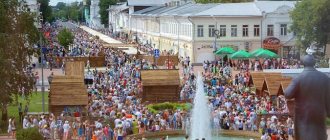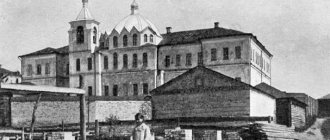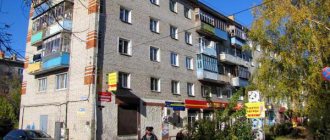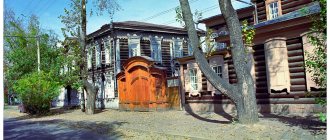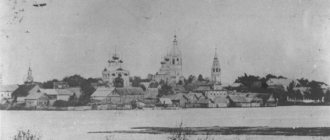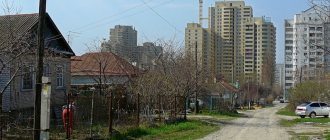City in Vladimir region, Russia
| Kovrov Kovrov | |
| City[1] | |
| City Council building | |
| Flag Coat of arms | |
| Location of Kovrov | |
| Kovrov Location of Kovrov Show map of Russia Kovrov Kovrov (Vladimir region) Show map of Vladimir region | |
| Coordinates: 56°22′N 41°20'E / 56.367°N Latitude 41.333°E / 56.367; 41.333Coordinates: 56°22′N 41°20′E / 56.367°N Latitude 41.333°E / 56.367; 41.333 | |
| A country | Russia |
| Federal subject | Vladimir region[2] |
| First mention | 1157 |
| City status from | 1778 |
| Government | |
| • Body | Council of People's Deputies[3] |
| Square | |
| • General | 57.4 km2 (22.2 sq mi) |
| Height | 125 m (410 ft) |
| population (2010 Census)[4] | |
| • General | 145,214 |
| • Evaluate (2018)[5] | 137,594 (−5.2%) |
| • Classify | 118th in 2010 |
| • Density | 2,500/km2 (6,600/sq mi) |
| Administrative status | |
| • Subordinate | City of Kovrov[2] |
| • Capital from | Kovrov district[6], G. Kovrov[2] |
| Municipal status | |
| • Urban district | Kovrovsky urban district[7] |
| • Capital from | Kovrovsky urban district[7], Kovrovsky municipal district[8] |
| Timezone | UTC + 3 (MSK [9]) |
| Postal code(s)[10] | 601900 |
| Dial code(s) | +7 49232 |
| OKTMO I WOULD | 17725000001 |
| Web site | Kovrov-gorod.RU |
Kovrov
(Russian: Kovrov) is a city in the Vladimir region, [11] Russia, located on the right bank of the river. Klyazma (and a tributary from the Oka). The population of Kovrov as of the 2010 Census was 145,214;[4] compared to 155,499 registered in the 2002 Census,[12] and further compared to 159,942 registered in the 1989 Census).[13] In terms of population, it is the second largest city in the Vladimir region (after Vladimir). In 1977, the population of Kovrov was estimated at 140,000.[14]
Economy
Kovrov is a major center of the Russian defense industry, specializing in mechanical engineering, metalworking, textile and light industry, as well as construction. Kovrov is home to the Degtyarevsky Plant, Kovrovsky Mechanical Plant, and Kovrovsky Electromechanical Plant.
Transport
Located on the Moscow-Nizhny Novgorod railway line - one of the oldest railways in Russia and one of the alternative routes of the Trans-Siberian Railway - Kovrov is also connected to Murom (served by the Moscow-Kazan railway line) via Murom Station.
Number of inhabitants at the end of the 19th century
By the end of the 19th century, the population of Kovrov was 9,186 people. Most of them were men. In terms of religion, there are almost 9 thousand Orthodox Christians, with schismatics in second place on this list (95 people), as well as very few Catholics, Protestants, Jews and representatives of other religions.
More than six thousand townspeople, more than two thousand peasants, about 400 military personnel, 112 nobles and 43 representatives of the clergy lived in the city. At that time, 770 houses were built in Kovrov. The city developed mainly thanks to the railway. First of all, trade was brisk. There was a lard melting plant, a mechanical weaving factory and a steam flour mill. Many were also employed in machine shops and iron foundries.
One of the most significant enterprises was a paper and weaving factory, owned by merchant Ivan Treumov. It annually produced up to 110 thousand poods of calico. In total, more than one and a half thousand people worked on it. Another interesting fact: there were 33 drinking establishments in the city, as well as two parish and one city school. Now you know what the population of Kovrov was on the eve of the 20th century.
Recommendations
Notes
- ^ a b
Resolution #433 - ^ a b c d
Law No. 130-OZ - [1]
- ^ a b
Federal State Statistics Service of Russia (2011).
“All-Russian Population Census 2010. Volume 1" [All-Russian Population Census 2010, vol. 1]. All-Russian Population Census 2010 [All-Russian Population Census 2010]
(in Russian). Federal State Statistics Service. - "26. The size of the permanent population of the Russian Federation by municipalities as of January 1, 2022.” Federal State Statistics Service. Retrieved January 23, 2022.
- ^ a b
State Committee of the Russian Federation on Statistics.
Committee of the Russian Federation for Standardization, Metrology and Certification. No. OK 019-95 January 1, 1997 “All-Russian classifier of objects of administrative-territorial division. Code 17 235”, Ed. changes No. 278 / 2015 dated January 1, 2016. (State Committee of the Russian Federation on Statistics. Committee of the Russian Federation on Standardization, Metrology and Certification. No. OK 019-95 January 1, 1997 Russian Classification of Administrative Objects (OKATO). Code 17 235
As amended by Amendment No. 278/2015 dated January 1, 2016). - ^ a b c
Law No. 143-OZ - Law No. 52-OZ
- "On the calculation of time." Official Internet portal of legal information
(in Russian). June 3, 2011. Retrieved January 19, 2022. - Post office. Information and computing center of OASU RPO. ( Post office
).
Search for postal facilities ( Search for postal facilities
) (in Russian) - Chisholm, Hugh, ed. (1911). "Kovrov". Encyclopedia Britannica
.
15
(11th ed.). Cambridge University Press. item 922. - Federal State Statistics Service of Russia (May 21, 2004). “The population of Russia, the constituent entities of the Russian Federation as part of federal districts, urban settlements, urban settlements, settlements, settlements is 3 thousand or more people” [Population of Russia, its federal districts, constituent entities of the Federation, districts, urban settlements, rural settlements - administrative centers and rural settlements with a population of more than 3000 people] (XLS). All-Russian Population Census of 2002 [All-Russian Population Census of 2002]
(in Russian). - “All-Union Population Census of 1989. The actual population of the union and autonomous republics, autonomous regions and districts, territories, regions, urban settlements and villages.” Came into force on the date of official publication (December 13, 2001). Published: “Vladimirskie Vedomosti”, No. 232, December 13, 2001 (Legislative Assembly of the Vladimir Region. Law No. 130-OZ of December 10, 2001 On the administrative-territorial structure of the Vladimir Region and the procedure for changing it
As amended by the Law of March 18, 2014 No. 22-OZ.
On the repeal of part 1 of article 15 of the Law of the Vladimir region “On the administrative-territorial structure of the Vladimir region and the procedure for changing it” and paragraph 3 of article 1 of the Law of the Vladimir region “On amendments to the Law of the Vladimir region” “On administrative territorial structure of the Vladimir region and the procedure for changing it
." Valid from the date of official publication (December 13, 2001). - Administration of the Vladimir region. Resolution No. 433 of June 13, 2007 “On the register of administrative-territorial entities and units of the Vladimir region,” as amended. Resolution No. 169 of March 5, 2015 “On amendments to the Resolution of the Regional Governor dated June 13, 2007 No. 433 “On the register of administrative-territorial entities and units of the Vladimir Region””. Came into force on the date of official publication. Published: “Vladimirskie Vedomosti”, No. 114, June 20, 2007 (Administration of the Vladimir Region. Resolution No. 433 of June 13, 2007. On the register of administrative-territorial entities and units of the Vladimir Region.
As amended by Resolution No. 169 of March 5, 2015.
On amendments to the decree of the Governor of the region dated June 13, 2007 No. 433 “On the register of administrative-territorial entities and units of the Vladimir region.”
Valid from the date of official publication.). - Legislative Assembly of the Vladimir Region. Law No. 143-OZ of September 9, 2004 “On granting the status of an urban district to the municipal formation of the city of Kovrov in the Vladimir Region and establishing its borders,” as amended. Law No. 110-OZ of August 10, 2009 “On Amendments to the Law of the Vladimir Region” On granting the status of an urban district to the municipality of the city of Kovrov in the Vladimir Region and establishing its borders “”. Came into force on the date of official publication (September 29, 2004). Published: “Vladimirskie Vedomosti”, No. 271, September 29, 2004 (Legislative Assembly of the Vladimir Region. Law No. 143-OZ of September 9, 2004 On assigning the status of an urban district to the municipal formation of the city of Kovrov, Vladimir Region and on establishing its borders
As amended Law of August 10, 2009 No. 110-OZ.
On amendments to the Law of the Vladimir Region “On assigning the status of an urban district to the municipal formation of the city of Kovrov, Vladimir Region and on establishing its border"
. Valid from the date of official publication (September 29, 2004) . - Legislative Assembly of the Vladimir Region. Law No. 52-OZ of May 11, 2005 “On granting the Kovrovsky district and newly formed municipalities included in its official status as municipalities and establishing their boundaries,” as amended. Law No. 88-OZ of August 5, 2009 “On amendments to the Law of the Vladimir Region” On granting the Kovrovsky district and newly formed entities received into its composition the status of municipalities and establishing their boundaries “”. Came into force on the date of official publication (May 17, 2005). Published: “Vladimirskie Vedomosti”, No. 156–157, May 17, 2005 (Legislative Assembly of the Vladimir Region. Law No. 52-OZ of May 13, 2005. On giving the Kovrovsky district and newly formed municipalities the corresponding status of municipalities and on establishing their boundaries
As amended by Law No. 88-OZ of August 5, 2009.
On amendments to the Law of the Vladimir Region “On giving the Kovrovsky district and its newly created municipalities the corresponding status of municipalities and on establishing their boundaries
.” Valid with day of official publication (May 17, 2005).
Kovrov
Kovrov, the City of Military Glory, is the administrative center of the Kovrov district and the second (after Vladimir) city in the Vladimir region by population - 138,552 people (2017). Kovrov is located on both banks of the Klyazma River, 64 km northeast of Vladimir. The city is a major railway junction on the Moscow (250 km to Kovrov) – Nizhny Novgorod highway, and has access to the M-7 Volga highway.
Story
Although Kovrov received city status only about 240 years ago, its age is much more respectable. According to legend, in 1157, the Vladimir prince Andrei Bogolyubsky, returning in winter from Suzdal to Starodub (now the village of Klyazminsky Gorodok, Kovrov district), got lost in the local forests and accidentally came to the hut of the trapper Elifan. In honor of the miraculous salvation of the prince at Christmas, the wooden Church of the Nativity of Christ was cut down on the high Klyazma bank. Based on the name of this temple, the village of Elifanovka located here began to be called the village of Rozhdestvenskoye. In the 13th century. The village became part of the Starodub principality.
From the end of the 15th century. Rozhdestvenskoye passes into the possession of the Starodubsky-Kovrov princes. The nickname of the princely family of Starodubsky “Carpets”, according to legend, appeared with the light hand of Prince Dmitry Donskoy after during the Battle of Kulikovo in 1380 A.F. Starodubsky carried the Khan's expensive carpet out of the enemy camp. It was this princely nickname that gave the new name to the Rozhdestvensky village - Kovrovo.
In 1567, the village of Kovrovo was donated by Prince I.S. Kovrov to the Suzdal Spaso-Evfimiev Monastery ,
and was in his patrimony for more than two centuries - until 1774. The area around the village was rich in limestone deposits, the development of which has long been one of the main occupations of the Kovrov residents. In particular, the buildings of the Spaso-Evfimiev and Pokrovsky monasteries in Suzdal were erected from Kovrov white stone.
The village of Kovrovo had a fairly advantageous location on the banks of the navigable Klyazma River. In this place there was a constant transport through Klyazma on the busy Nizhny Novgorod trade route. A trade transhipment pier was created near the village of Kovrovo, where bread, fish, salt and other products, forest materials, and handicrafts were brought from everywhere.
All this contributed to the acquisition of urban status by the village of Kovrov. On September 1, 1778, Empress Catherine II signed a decree establishing the district town of Kovrov in the Vladimir governorship. In 1781, it already had its own coat of arms as a city privilege. There is a legend that the Tsar's governor, Count Vorontsov, was very fond of hunting hares in the Kovrov forests. It was he who proposed to depict these animals on the Kovrov coat of arms next to the emblem of Vladimir - the lion.
Until the middle of the 19th century. Kovrov was a quiet provincial town. The industrial and commercial development of the city was facilitated by the construction of the Nizhny Novgorod railway, traffic on which was opened in 1862. At the same time, central railway workshops appeared in Kovrov, which became famous in Russia. Here, freight and passenger cars were created, which were awarded at the end of the 19th century. highest awards at industrial exhibitions in Moscow and St. Petersburg. In addition, the first ambulance trains were produced in the Kovrov workshops. During the First World War, Kovrov was one of the formation points for military ambulance trains, each of which could receive up to 400 wounded. In 1929, the railway workshops were repurposed into a mechanical repair plant, which carried out orders for the repair of imported excavators, and in 1931 - into the Kovrov Excavator Plant, which became the first manufacturer of domestic Kovrovets excavators.
By the beginning of the 20th century. Kovrov had already become a major industrial center of the Vladimir province with a population of 14,571 people (according to the results of the first All-Russian census of 1897). Along with the railway workshops, a large steam-powered calico and weaving factory of the merchant I.A. operated in the city. Treumova, an iron foundry, numerous brick factories, a steam mill, a sawmill.
In 1916, construction began on the Kovrov Machine Gun Plant. The real development of the plant since 1918 was associated with the activities of the outstanding scientist V.G. Fedorov, the inventor of the world's first assault rifle, and the outstanding designer of automatic weapons V.A. Degtyarev, who headed the plant’s design bureau until his death in 1949. There is a memorial house-museum of V.A. in Kovrov. Degtyarev, whose exhibition tells about his life and design activities. In 1949, the plant received a new name - Plant named after. V.A. Degtyarev (today it produces not only defense, but also civilian products, for example, motorcycles). During the Great Patriotic War, the plant became the country's main enterprise for the production of anti-tank and other types of weapons for the front.
Carpets during the Great Patriotic War
It is difficult to overestimate Kovrov's contribution to the Great Victory. 13 Heroes of the Soviet Union brought glory to the city (L.V. Lopatin, I.S. Nosov, V.A. Burmatov, I.V. Pershutov, F.G. Konkov, V.I. Yastrebtsov, A.P. Generalov, P.K. Rangev, V.G. Kabanov, P.S. Mashtakov, V.A. Zaevsky, A.P. Martynov, G.V. Provanov). All large enterprises of Kovrov were reoriented towards military production. There were many hospitals in the city, since it was located in the rear near the front line. In November 2011, by decree of the President of the Russian Federation, Kovrov was awarded the honorary title “City of Military Glory.” In November 2013, on the square in front of the central entrance of JSC Plant named after V.A. Degtyarev" stele "City of Military Glory" was installed.
In 2012, in connection with the awarding of this title to Kovrov, it was decided to adjust the coat of arms taking into account the recommendations of the Heraldic Council under the President of the Russian Federation. Instead of a red ribbon, the coat of arms is now surrounded by a white and blue order ribbon - a sign that in 1978 Kovrov was awarded the Order of the Red Banner of Labor. The golden tower crown with five teeth is an indicator of the status of the urban district. The swords crossed behind the crown symbolize the title “City of Military Glory” awarded to Kovrov.
Economy
Modern Kovrov is a large industrial and scientific center of Russia, primarily in the defense industry, mechanical engineering and metalworking. Enterprises in these industries create over 70% of the city’s total industrial output and employ about 40% of the city’s working population.
OJSC "Plant named after Degtyarev" (ZiD) today is a diversified enterprise that produces not only defense products (small arms, anti-tank and missile weapons), but also motor vehicles (motorcycles, motorized towing vehicles, scooters), soil-cultivating equipment, food industry equipment, LED lamps. PJSC Kovrov Mechanical Plant (KEP) is one of the leading enterprises in the Russian nuclear industry, since 2007 specializing in the manufacture of high-tech and technically complex products - gas centrifuges (devices for separating uranium isotopes). The main specialization of OJSC Kovrov Electromechanical Plant (KEMZ) is hydraulic equipment, and the plant also produces multifunctional mobile robotic systems, used, in particular, for searching and remotely neutralizing explosive devices. In 2022, KEMZ began production of a new model range of Zetor Forterra (“ANT 4135F”) tractors as part of the import substitution program. VNII "Signal" is engaged in the development and production of defense hydraulics and electronics. Design Bureau "Armatura", since 1997 part of the State Space Research and Production Center named after. M.V. Khrunichev, works in the field of development and manufacturing of units and systems of ground infrastructure of rocket and space complexes, as well as pneumatic hydraulic systems of launch vehicles.
Among the light industry enterprises in Kovrov there are such well-known in Russia, producing men's suits, "Ascona" - the largest manufacturer of orthopedic mattresses, etc. In the 1990s, the ancient pottery craft was revived, in 1993 the Kovrov Clay Toy factory was founded, received the status of folk art.
Famous people
The names of many famous people of Russia are associated with the city of Kovrov. Famous gunsmith designers V.A. lived and worked here. Degtyarev (1879/1880-1949), V.G. Fedorov (1874-1966), G.S. Shpagin (1897-1952). A native of Kovrov was I.M. Yatsunsky (1916-1983), Soviet scientist, one of the creators of the first artificial Earth satellite, is recognized as the founder of space geodesy. Born in Kovrov: A.M. Kolesov (1834-1902), Russian portrait painter; S.K. Nikitin (1926-1973), famous Soviet writer; A.P. Nepomniachtchi (1968-2007), popular bard, rock musician, etc.
Sports resort Dobrograd
Today, of interest to tourists and guests of Kovrov is the Dobrograd sports resort, which is located on the territory of one of the first private cities in Russia and is a unique object of public-private partnership. In September 2016, the VI International Sports Forum “Russia – a Sports Power” was held in Dobrograd.
Author: V. Korolkova
Anthem of the Kovrov region
Kovrovsky district - my life
At early dawn I will get up, washing myself with kindness. Again the worries of the day are coming, sent by fate. A villager will open the window of my soul again; it fell to me to serve the region, and here is my abode.
Chorus:
Live, region, bloom and sing, calm your heart with love, may your whole path be bright, and this is the essence of life.
(2 times)
Here strong people live and are famous for their deeds, Harvesters drive through the fields and extract stone. Malygin craftsmen give bricks to Russia, And the Mayak glassblowers work beautifully.
Chorus.
The Kovrovsky district is my life, I love your open spaces, Here is the Starodub land and Smolino patterns. In Vsegodichi the holy temple is the same age as hoary centuries. I bow to my native land and glorify it in song.
Chorus:
Live, region, bloom and sing, calm your heart with love, may your whole path be bright, and this is the essence of life. Give hope to people, revive holy temples, Let the bells ring from all sides.
Words and music by L. Kurnina.
Light industry
Light industry is developed in Kovrov and the sector produces popular consumer goods from plastic - snow shovels, garden equipment, skis, ice skates, snow scooters and mailboxes. The Vladimir Door Factory is one of the largest in the region for the production and production of interior doors, offering the best prices on the local market.
Nikos LLC produces cotton fabrics and produces men's suits. The commercial equipment plant in Kovrov has launched the production of automation systems, and the Trimo-VSK enterprise produces roofing and wall sandwich panels.
It was in Kovrov that the PIK research and production corporation opened a large production of mattresses and specializes in several areas of the economy - construction, hotel business, production of bread and meat products, design services, and securities transactions.
The Kovrov Electrotechnical Plant produces electrical equipment, primarily panels, cabinets and panels. CJSC Proton has launched the production of access control and management systems, as well as the production of economical lighting devices, the design of which is based on diodes.
There is also a clay toy factory in this city, which develops a traditional craft that was widespread in ancient times in this region. occupied a niche in the production of bathtubs, sanitary ware, spa pools and showers.
These enterprises employ a significant part of the residents of Kovrov.
Population of Kovrov: size and ethnic composition on News4Auto.ru.
Our life consists of everyday little things that in one way or another affect our well-being, mood and productivity. I didn’t get enough sleep - my head hurts; I drank coffee to improve the situation and cheer myself up - I became irritable. I really want to foresee everything, but I just can’t. Moreover, everyone around, as usual, gives advice: gluten in bread - don’t go near it, it will kill you; A chocolate bar in your pocket is a direct path to tooth loss. We collect the most popular questions about health, nutrition, diseases and give answers to them that will allow you to better understand what is good for your health.
Coat of arms
The coat of arms of Kovrov is presented in the form of a French shield. In a green field there are 2 silver hares, sitting on their hind legs and facing away from each other. In the upper left corner is the coat of arms of the Vladimir region.
The shield is crowned with a tower crown with five teeth, behind which two swords are placed crosswise. It is surrounded by a white and blue ribbon of the Red Banner of Labor. She points to the award being given in 1978.
The artistic composition is included in the State Heraldic Register of the Russian Federation under No. 7566. Adopted by decision of the Council of People's Deputies of the city No. 24 of January 25, 2012.
National composition
The national composition of the residents of Kovrov is practically no different from the situation in the Vladimir region and throughout Central Russia in general.
At the moment, almost 90 percent of the residents of Kovrov are Russian. All other nationalities are represented in negligibly small numbers. It is worth saying that no other nation has gained even one percent of the inhabitants among the entire population of Kovrov, so there are no strong and large diasporas here.
In fact, Ukrainians have second place in this ranking: they are 0.87%, which is about 12 and a half thousand. The top three are completed by the Tatars, who make up about half a percent of the total population.
Among the peoples of whom more than one thousand people live in Kovrov, there are also Armenians, Belarusians, Uzbeks, Azerbaijanis, Gypsies, Mordovians, Moldovans, Tajiks, Chuvashs and Germans.
According to the latest data, 927 Georgians live in the region, even fewer Mari, Udmurts, Bashkirs, Kyrgyz, Lezgins, Koreans, Jews, Avars, Kazakhs, Dargins, Poles, Chechens, Turkmen, and Greeks. There are 253 Ossetians living in Kovrov - this is the smallest nation, if we take into account those who indicated their nationality.
Development of Kovrov in the 20th century
After the October Revolution, Kovrov retained its reputation as the industrial center of the Vladimir region. In 1929, the railway workshops were reorganized into a mechanical repair plant, which gave new impetus to the development of Kovrov. It produced excavators according to imported drawings.
When the need arose for the production of domestic earth-moving machines, the authorities decided to set up an excavator plant on the basis of the previous workshops. Already in the spring of 1931, the first Kovrovets excavator rolled off the assembly line. Two years later, mass production on an industrial scale began here. In 1966, the Kovrov Excavator Plant, which became popular throughout the Soviet Union, was awarded the Order of Lenin. This was the highest Soviet award that could be awarded to the enterprise.
Another industrial center of Kovrov was the machine gun factory, which began to be built back in 1916. After the October Revolution, famous designers of that time - Degtyarev and Fedorov - were sent here to launch the production of firearms. The stable operation of the plant played an important role in the success of the Red Army in the Civil War.
During the Great Patriotic War
During the war against the Nazi invaders, almost 8 thousand Kovrov residents enlisted in the ranks of the voluntary people's militia. Two rifle regiments, an artillery division, three fighter battalions, and a cavalry brigade were formed. The latter was commanded by Major General Pyotr Rudchuk.
The former machine gun factory became the main enterprise for the production of automatic weapons for the front. In 1941, small arms designer Vasily Degtyarev created the famous anti-tank rifle. During the war years, more than a million units of various weapons were produced and sent to the army, including Shpagin submachine guns, aircraft guns, and anti-tank rifles. The Kovrov plant again played a decisive role in supplying the army with weapons.
After the war, motorcycle production was opened in Kovrov, and the Degtyarev arms factory began producing missile weapons.
In 1949, another large industrial enterprise was founded here - a garment factory. Since 1968, intensive housing construction began, which is carried out by Kovrovstroy. Construction began on the southern part of the city. In 1970, a reinforced concrete bridge was put into operation, and five years later a trolleybus service was launched.
